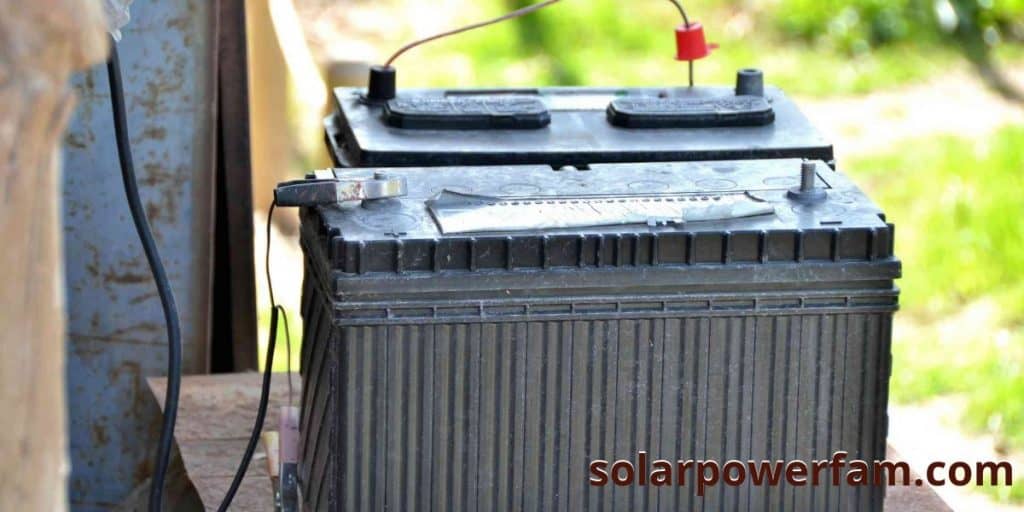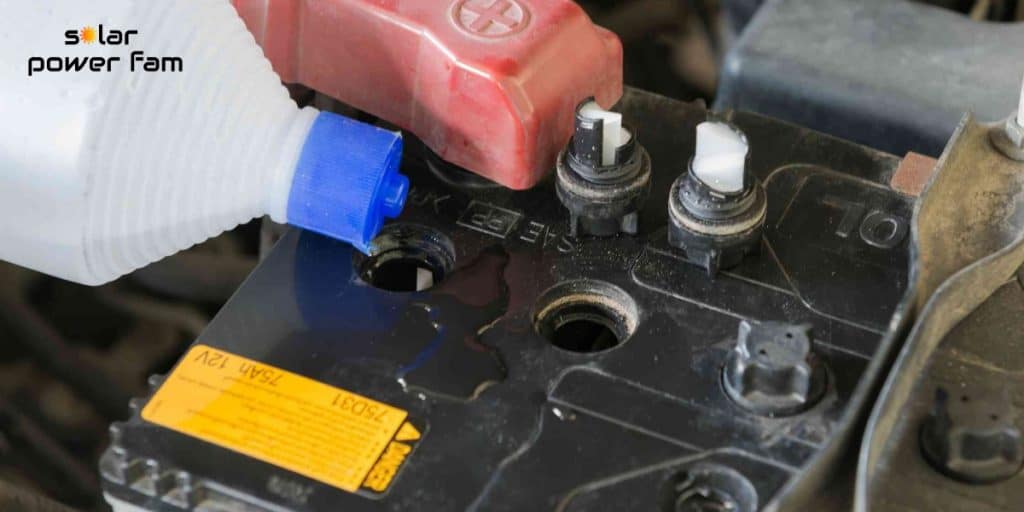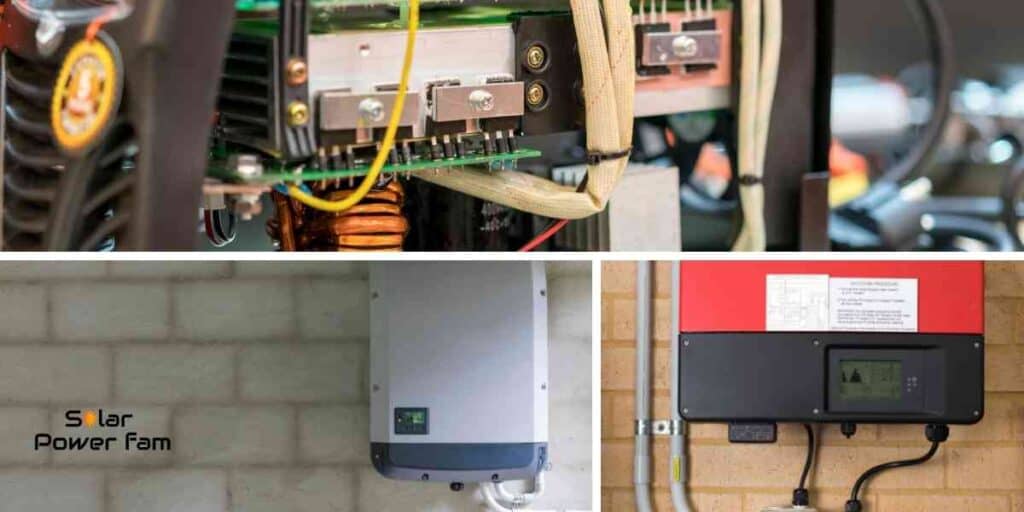Victron SmartSolar MPPT is the best solar charge controller having high temperature resistance, up to 98% efficiency, feature enriched mobile monitoring app with 30 days history for easy troubleshooting.
And here’s my list combining the best PWM solar charge controller and others.
Best Solar Charge Controller
| Image | Product | Rating | Today's Deal |
|---|---|---|---|
Best Value  | Victron Energy SmartSolar Best MPPT Solar Charge Controller
| 9.6 | See on AmazonRead Reviews |
PWM  | Go Power! By Valterra Best PWM Solar Charge Controller
| 9.2 | See on AmazonRead Reviews |
Highest Quality  | MidNite Solar Best Solar Charge Controller For RV
| 9.4 | See on AmazonRead Reviews |
 | Renogy Rover Best Solar Charge Controller For Lithium Batteries
| 9.1 | See on AmazonRead Reviews |
 | EPEVER Best Solar Charge Controller For AGM Batteries
| 9.2 | See on AmazonRead Reviews |
Read my guide on best 3000 watts inverter here.
Best MPPT Solar Charge Controller
SmartSolar 100/30 MPPT charge controller by Victron Energy is the best MPPT solar charge controller with high protection scheme, ultrafast in converting inputs to standard output, and all that comes with a digital app, from where you can manage and know the situation of your solar power system easily being anywhere.
The modern technological circuits are present inside, which charge it 30% more efficiently compared to any PMW charge controller, and surprisingly 10% more than other MPPT controller! It has a very high efficiency of 98% up to the 40 ̊C, that’s why it doesn’t even require a cooling fan as it is very efficient even at high temperatures.
- Easily Controlled through a mobile app
- Efficient at High temperatures conditions
- Doesn’t require any separate cooling system
- Installation is a bit tricky and requires an expert technician
A charge controller requires protection against high temperatures as when a battery is charged it converts power into heat and dissipates that through a heat sink, but Victron SmartSolar MPPT 100/30 is efficient at high-temperature up to 40 ̊C, it doesn’t get much affected by temperature. It comes with a digital android app, and you can check out the working history of your solar controller for the last 30 days and control the settings easily through it.
Best PWM Solar Charge Controller
Valterra GP-PMW-30-UL is the best PWM solar charge controller that comes with better efficiency, is result-oriented, has double battery connections, boosts charging phase, and is easy to install compared to any other pule modulation width solar control charger. It is efficient as it can handle 30 amperes of solar charge and 570-watt panels with a charging mechanism of 4 stages. It absorbs bulk power, compares it to the battery voltage boosts it up if needed, and then supplies the power.
- Perfect with all battery types
- Digital and graphical display screen
- Doesn’t have Bluetooth connectivity
It has a digital LCD display that shows the battery charging level, input and output voltage levels, input and output current levels, and charging medium. Another diffident thing about Valterra GP-PMW-30-UL PWM controller is, it has dual battery connections, you can charge multiple batteries setting up them as your primary and secondary battery, or you can connect an extra battery that you might use for your camping, RV, or any other purpose, which will charge after charging your primary battery.
This PWM charge controller is adjustable to all types of batteries in the market, which makes it a great option to choose when you have multiple types of batteries, like different for your home and another for your RV. Your battery type doesn’t matter, the PWM charge controller works efficiently with lithium ion battery, wet cell, AGM, gel or lead acid battery.
Best Solar Charge Controller For RV
MidNite Solar CLASSIC150 MPPT is the best solar charge controller for RV, If you are looking for an efficient, compact, digital, high power handling capacity and perfect protection scheme maximum power point tracking charge controller for your RV. MPPT technology already puts it on the lead against all PMW charge controllers in its competition as it is 30% more efficient in battery charging.
Talking about its power handling capacity, it can handle up to 6,000 watt solar panel system easily, according to users, the MPPT controller has a rated power watt capacity of up to 14.4kW. It’s indeed small in size and compact design, quite handy, but still very solar controller. It works up to excessive temperatures as can handle heat up to 75 ̊C at the terminal, and still would be working perfectly.
Another good thing about this charge controller is that it can charge batteries of different voltages as it can perfectly charge any battery type from 12v to 72v. It has a very high watt power capacity of 14.4kW, which lowers the chances of load surge effects on the charge controller. Strong metal body and compact size maximum power point tracking charger with a LED indicator of input and output conditions with showing battery charge level, perfect for your RV battery bank and solar power system.
Best Solar Charge Controller For Lithium Batteries
Renogy Rover40 Amp is the best solar charge controller for lithium batteries. It’s efficient, smart, metallic, high protection scheme, digital app control, digital display screen, works with all kinds of deep cycle batteries, but is perfect with lithium batteries.
The most appealing thing about this MPPT charge controller is that it is auto adjustable, it adjusts automatically to a 12v or 24v DC system as required. Talking about its efficiency, its conversion efficiency is 98% that means the voltage is much regulated to the lithium batteries.
It is made from die-cast aluminum, which dissipates the heat perfectly and keeps the system cool. Lithium-ion batteries are the modern upgraded form of battery and work perfectly, but it requires more steadiness of power flow into it, with temperature management as Renogy Rover 40 Amp MPPT Charge Controller is perfect in both, it fits best to lithium ion batteries.
- Auto adjustable from the 12v to 24v solar power system
- High heat dissipation
- Perfect with Lithium-ion batteries
- Slow customer service
It has a quality electronic protection scheme installed, which protects it from overload, overcharge, over-discharge, and reverse short circuit protection. It has an LCD for input/output voltage/current condition with showing battery charge levels. You can pair up with it through a smart app and control settings easily through your android/iOS mobile.
Best Solar Charge Controller For AGM Batteries
EPEVER MPPT solar charge controller is best for AGM batteries. EPEVER MPPT charge controller has high tracking efficiency, High watt power handling capability, temperature sensing ability, adjustable to different solar voltage systems, and works with all kinds of lead acid batteries, flooded batteries, but perfect with AGM batteries.
The high tracking efficiency of 99.5% makes it extremely fast in tracking the input, and standard output voltage difference, then as it is MPPT charge controller is relatively more efficient and has a quick response rate. It has a built-in temperature sensor that senses the battery temperatures and then dissipates more heat through the charge controller heat dissipation sink.
It has a high-power handling capability of up to 6000-watt power input and has a dual connection system, you can adjust it to a 12v system or 24v system according to your requirement. A 12v system works well with a 600w panel, and a 24v system sits perfectly with a 1200w panel. Its high protection scheme protects your battery from overcharge, overload, and overheating issues.
- High power handling capability
- Quality remote meter
- Perfect with AGM batteries
- Does not work with lithium-ion batteries
It comes with an MT50 remote meter which shows statistics digitally, graphically, and in textual form. It works perfectly with AGM batteries because the AGM batteries are excellent because they have low internal resistance and are capable of dealing with high currents as this charge controller has high power handling capability, they are the best match.
How To Select Solar Charge Controller
The solar charge controller has to regulate the voltage and current going as input to the storage battery, so your first consideration while selecting a solar charger should be the total power in watts of your solar panels and the current values.
Your charge controller should have at least 20% more capacity to handle the power than your solar panel system, which precisely gives you a size assumption for your solar charge controller, and the size of your power production helps you to choose between MPPT and PWM.
For larger and more compact systems, use MPPT, and where little fluctuations don’t matter buy PWM. The second consideration is the type of battery, your battery is either 12v or 24v, and as there are special solar control chargers in the market for AGM and lithium-ion batteries, so select accordingly.
Checklist before selecting a solar charge controller.
- Power production of your Solar panel system, choose a charger that can handle 20% more power.
- The size and load consideration will help you choose between MPPT and PWM.
- Your battery voltage type.
- Type of battery (lithium-ion, AGM, etc.)
- Your load type (RV, domestic use, commercial use, etc.)
My guide to calculate solar panel, charge controller and battery here. And inverter sizing here.
What Is A Solar Charge Controller
A solar charge controller is a smart electronic device that regulates the incoming input voltage, and current from solar-produced power to the preset standard values as output. So, that battery always receives standard voltage and current. Second, it prevents overcharging the battery by using a shunt controller that converts surplus power into heat and dissipates it from the system through heat sinks.
Here’s what is a power inverter and read what’s a solar inverter here.
How Does A Solar Charge Controller Work
A solar charge controller has four main fundamental components in its structure. The first is the boosters that amplify the voltage or current signal by maintaining it to standard values, then a battery indicator, which indicates the level of battery charge, then battery charge controller that prevents overcharging, and at last power supply unit, which supplies steady standard power to the battery.
Read my guide on best 2000 watts power inverter here.
Type Of Solar Charge Controller
- Pulse width modulation (PWM)
- Maximum power point tracking (MPPT)
Pulse Width Modulation (PWM) Solar Charge Controller
Pulse width modulation solar charge controller is a simpler design solar electric charge controller that reduces the power supply to the battery by judging its battery charge level. It reduces the supply automatically as the charging level goes higher.
Usually, a solar charge controller is meant to standardize the input power to the battery, but a PWM solar charge controller’s primary task is to prevent overcharging. It is used for a small unit of solar power system where the battery fully charges in and drains out on daily basis. So, in such a situation, it is essential to not overcharge the battery for a longer lifespan. So, for every specific percentage rise in charge level, power input to the battery decreases.
Do you know why do solar cells need an inverter? Here’s why.
Maximum Power Point Tracking (MPPT) Solar Charge Controller
MPPT is a complex and compact design solar charge controller that manages the voltage and current input to the battery on high standards. MPPT solar charge controller reduces the power flow to the battery when it reaches the high charge level, unlike the PWM charge controller that keeps reducing power flow to the batteries as charging goes high.
They are relatively more efficient than PWM charge controller as it only reduces the power flow to the batteries when it is already almost fully charged.
Read my guide on best 1000 watts inverter here.
PWM Vs. MPPT Solar Charge Controller
| Feature | MPPT | PWM |
|---|---|---|
| Current Drawn | At maximum panel capacity voltage | At only above the battery voltage |
| Operation mechanism | Smart DC-DC conversion | Electronic switching |
| Efficiency | More (30% more efficient than PMW) | Less |
| Conversion Efficiency | 97% to 98% | 96% to 98% |
| Tracking Efficiency | Up to 99.5% | Up to 90% |
| Preferred Size | Large solar power system | Small domestic solar power system |
| Battery | Works with all | Works with all |
| Price | High | Moderate |
| Installation Cost | High | Low/Moderate |
| Installation | Requires Expert/Technician | Comparatively easy to install |
Here’s the differences between inverter vs. converter and here you go for inverter vs. generator.
Free online solar charge controller calculator here.
Solar Charge Controller FAQ
Read my guide on best solar fence charger here.
Best solar charge controller helps protect the solar panels and battery from damage from overcharge, voltage surge and increase efficiency. Get one from my list with confident.
Read my guide on best solar tiki torches here. DO you know solar tubes can save you from massive power bills. Here’s the pros and cons of solar tube. Read the differences of NiCd vs. NiMh batteries for solar lights here.




